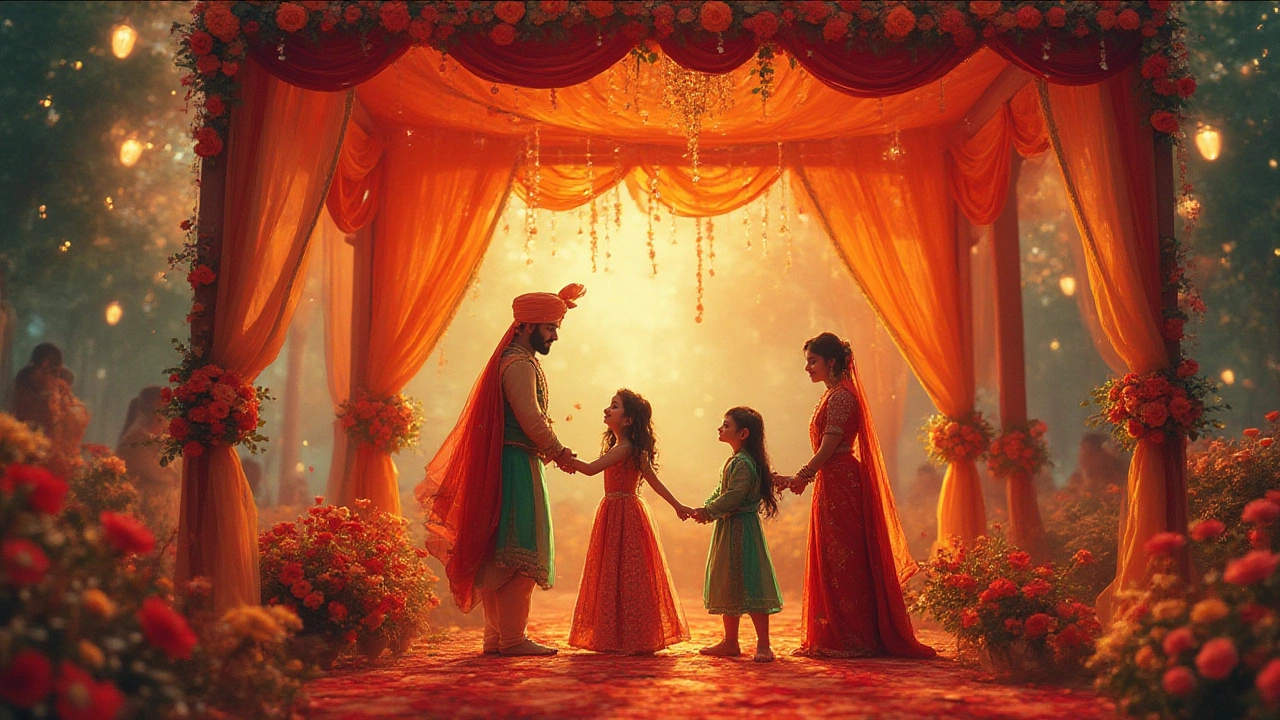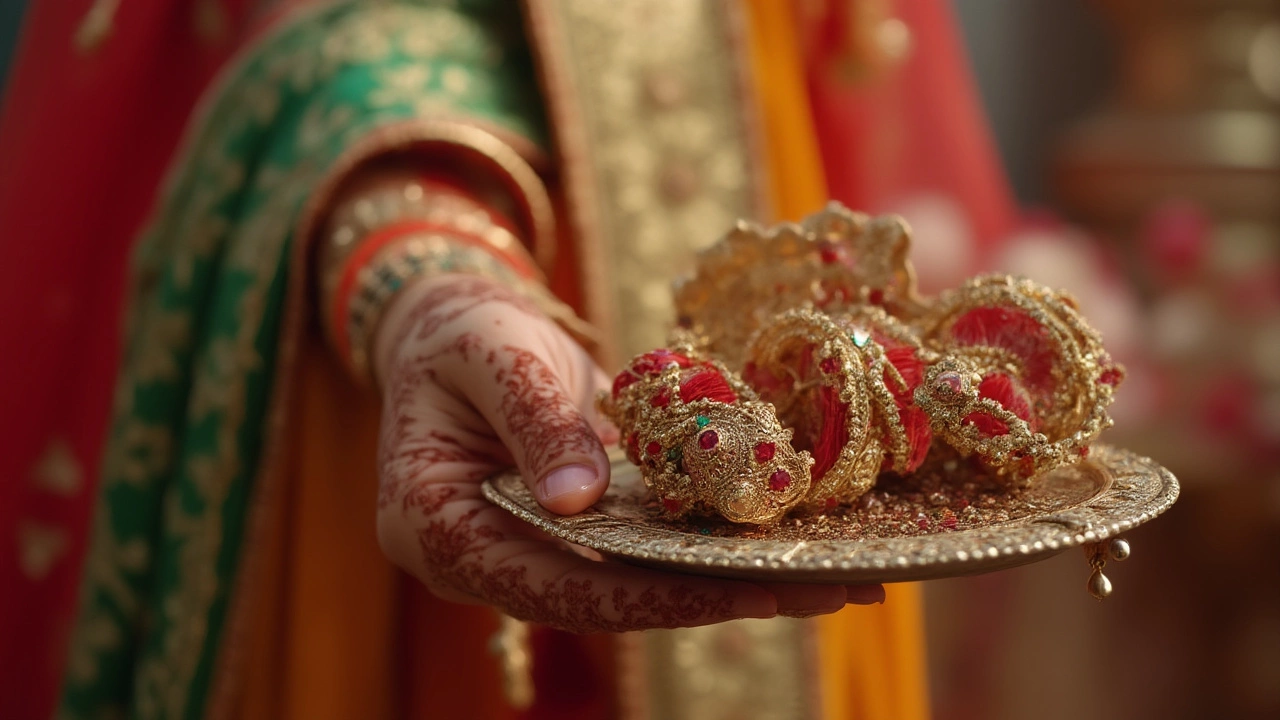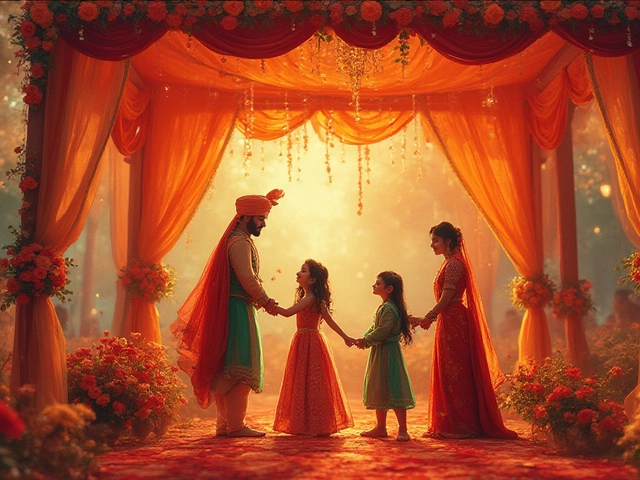
Forget the old advice about never wearing white after Labor Day—did you know people in some cultures consider wearing white at a wedding unlucky? The color you choose for your wedding isn’t just a style decision, it can be a bold invitation for luck, happiness, or abundance. Just ask a fiery red-tinged bride in China, a dazzling golden groom in India, or a Scottish couple tying the knot in green. It’s wild how much color can set the tone—with some hues practically promising a lifetime of good fortune. Looking for that edge when you say "I do"? Let’s chase down the luckiest wedding color, one pigment at a time.
The Fascinating History of Wedding Colors
Turns out, wedding color traditions have been flowing for centuries, crossing continents and making bold statements at thousands of altars. Whether we realize it or not, the color of a wedding dress or the shade of table décor speaks volumes about who we are and what we hope for. Dig into history books, and you’ll find royal brides dressing in silver and gold, not white. For example, Queen Victoria made white wedding dresses a thing—in 1840, her marzipan-white satin dress shocked guests, but kicked off the now-classic bridal trend. But for centuries before, bright and deep hues were all about showing off family fortunes and attracting happiness. In India, red has been the color of choice forever, symbolizing prosperity and the lifelong spark of marriage. That’s why every year, over five million brides in India slip into red, pink, or gold saris, each one woven with wishes for luck and love. Meanwhile, in China, red reigns supreme as well. Brides wear qipaos so vibrant you could never mistake them for anything but lucky. Red, in Chinese tradition, stands for vitality, joy, and protection—think of it as a color shield against bad vibes. Elsewhere, green is prized. Scottish folklore links green to growth, harmony, and new beginnings, so expect to see a leafy accent or even entire bridesmaids’ parties cloaked in emerald. African weddings, especially in Nigeria or Ghana, are a riot of color: gold, purple, turquoise, and coral take center stage thanks to their strong meanings—royalty, riches, and unity. Every culture adds its own twist, passing down wisdom in the pigment that paints the day. If you ever paused on what color is the luckiest, know the answer is layered and deep—and sometimes, it all depends on your roots.
Wedding color customs shift as generations reinterpret tradition. In the West, blue is still considered lucky for its symbolism of fidelity (“something blue” rarely skips a beat in the bridal rhyme), while red, once avoided in European ceremonies, is surging in popularity for bouquets, shoes, and even lipstick. Studies show that brides flock to colors associated with positivity. Pantone's annual color picks influence about 15% of Western wedding palettes, subtly, but surely. This tells us: picking color is less about rules, and more about what carries meaning for you, your partner, and your families.
What Makes a Wedding Color "Lucky"?
Is luck sealed into coloring, or is it something we bring to the day by believing? There’s no scientific way to prove red attracts prosperity or that blue keeps heartbreak away, but color psychology shows real effects on mood and mindset. Red doesn’t just pack a punch visually—it actually makes hearts race, triggers excitement, and keeps spirits high. A 2017 study in the Journal of Environmental Psychology showed that guests were 25% more likely to describe weddings with warm color schemes as "joyful" or "memorable" compared to cooler palettes. In practice, cultures have passed down what’s lucky based on which colors showed up at the best weddings and most lasting marriages. Think of it: if red weddings frequently ended with big, happy families, or golden details lined up with prosperous futures, word spread. Over time, these lucky hues became rituals.
Superstition still lives in weddings, too. In Greece, it’s considered bad luck for a bride to wear yellow, but blue is a must-have. In Spain, orange flowers make hearts beat faster because they mean good luck, not just in love, but in family. Certain cultures even go further—avoiding black (mourning) or sometimes white (ghosts or mourning, depending on the tradition). Modern couples aren’t bound by these old rules, but lots still look for luck wherever they can. The symbolism can shape the decisions: brides pin touches of blue under their gowns, or couples choose table settings that beam with optimism, all in hopes that a prosperous color will rub off on the future.

The World’s Luckiest Wedding Colors and Their Meanings
Lucky colors are as personal as your grandmother’s pearl earrings—what’s considered lucky at one celebration could be totally taboo at another. Here’s a closer look at the hues with the richest reputations for luck around the world:
- Red: The MVP of wedding luck, especially in China and India. This color screams love, joy, and financial fortune.
- Gold: Everywhere from Nigeria to the Persian Gulf, gold stands for splendor, wisdom, and’s a clear sign that abundance is on the invite list.
- Blue: In the UK, something blue is non-negotiable—a stand-in for loyalty and purity, and believed to ward off evil.
- Green: Ireland and Scotland swear by green for good health and growth. Couples even tuck clover in bouquets for extra blessings.
- Purple: In Thailand, purple offers spiritual protection and plenty of royal vibes. Also, in Egypt, purple is all about dignity.
- Pink: For modern brides, pink means romance, playfulness, and fresh beginnings. In Japan, pink sakura is especially auspicious in spring weddings.
Different families attach their own superstitions or stories. Some might never dream of black, fearing it invites sorrow. In other places, white’s coldness is gently avoided—red, pink, or gold are preferred. Across all this, though, the lucky thread is obvious: lucky wedding colors usually pull in wishes for love, prosperity, and unity—not just for the couple, but for everyone present.
Now, if you’re itching to know what color is statistically popular, here’s a peek at a recent survey of wedding color themes worldwide:
| Color | Countries Where It's Lucky | Symbolism | % of Brides (Global 2024) |
|---|---|---|---|
| Red | China, India, Ghana | Prosperity, Joy | 36% |
| Gold | Nigeria, Middle East, India | Wealth, Success | 28% |
| Blue | UK, Greece, USA | Loyalty, Purity | 15% |
| Green | Ireland, Brazil, Scotland | Growth, Luck | 12% |
| Purple | Thailand, Egypt | Dignity, Spirituality | 6% |
| White | USA, Australia, France | Innocence, New Beginnings | 3% |
Red takes the top prize, with gold and blue gaining traction for their wish-fulfilling energies. Pink is trending, but what’s surprising is how even small touches of luck—ribbons, boutonnieres, or cake accents—get woven in for extra security.
Tips for Choosing Your Luckiest Wedding Color
Selecting your wedding color shouldn’t feel like a pop quiz in cultural studies. Start with what feels right for you and your story. Maybe your partner’s family treasures green for its ties to their Celtic roots, or you grew up dreaming of a red-carpet wedding, literally. Don’t be shy about blending traditions—modern weddings fuse red bouquets with Western blush dresses, or dress the reception in golden candlelight to please both families.
Here are a few tips to mix the perfect potion of luck and style:
- Talk with parents or relatives about family color traditions. Sometimes, a great-aunt might reveal a superstition you’d never guess.
- Layer lucky colors. If red’s too bold head-to-toe, sneak it in with shoes, flowers, or a ribbon in your hair.
- Explore your venue. Some settings pop better in vibrant tones, while others shimmer in subtle, more muted shades.
- Don’t forget meaning in the accessories! A lucky piece of jewelry, a borrowed clutch, or colored cufflinks can carry your favorite wishes.
- Watch out for clashing signals. Avoid color combos that might accidentally evoke something inauspicious in your guests’ cultures. It’s always okay to check in with loved ones if you’re unsure.
- Make it personal. Add those unexpected touches that make you both feel happy, excited, and lucky on your day. That’s really what matters.
You can also play with lucky colors beyond just the dress. Think cake icing, napkins, or even your bouquet. Trends show more couples working with event stylists to subtly weave in auspicious details—rose gold table runners, emerald green invitations, ruby lipstick, or gold dust on desserts. Even guests sometimes dress in the lucky shade to send extra blessings your way. The end goal? Pick a color or mix that sets your heart racing. That way, the luckiest color is the one you step confidently into, hand in hand.
Whether you’re painting your whole day in one shade or adding touches here and there, remember the most important thing: your wedding color is an invitation for love, happiness, and maybe a little extra luck from the universe. Go ahead—make it unforgettable!


Comments
Post Comment